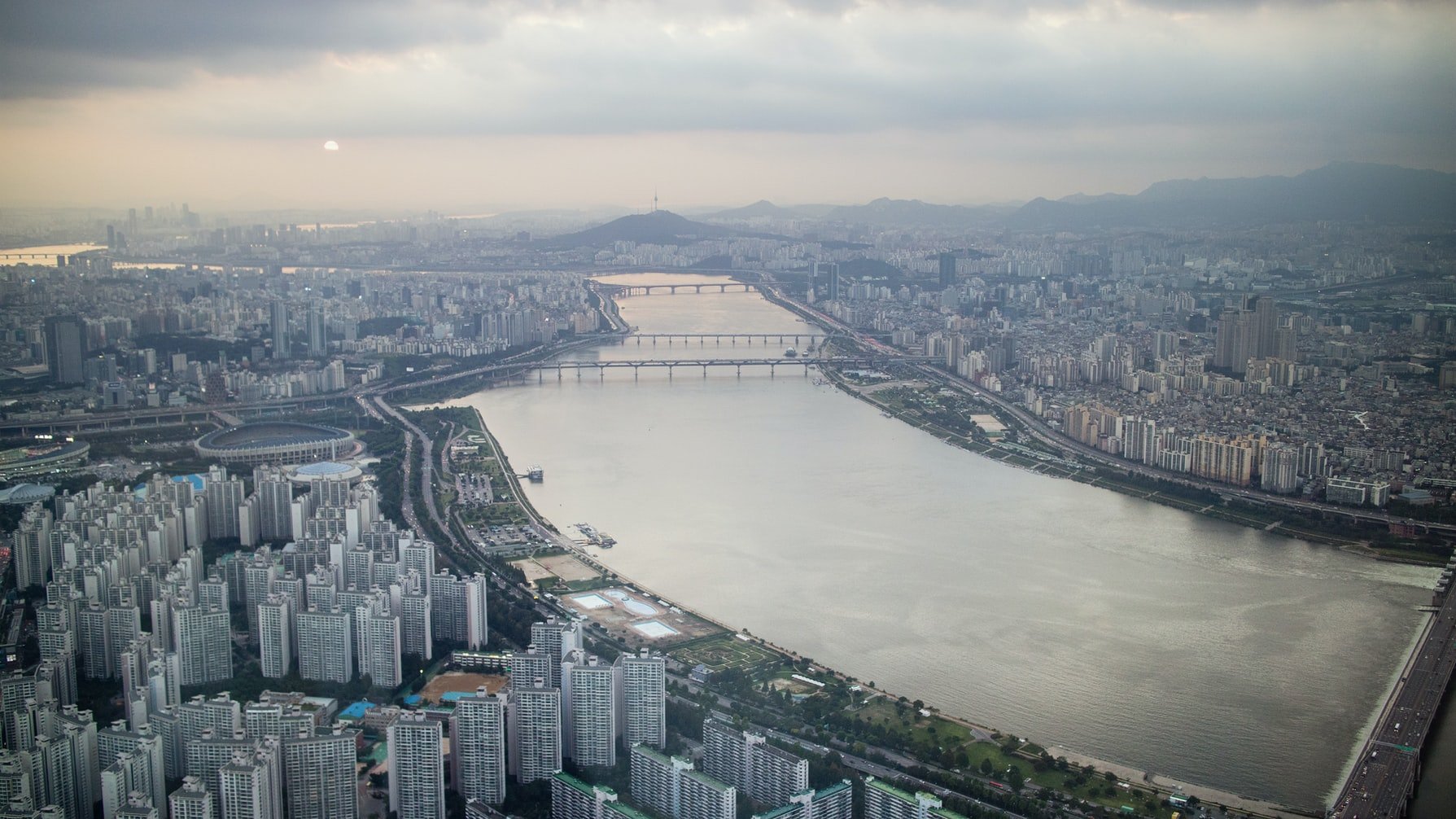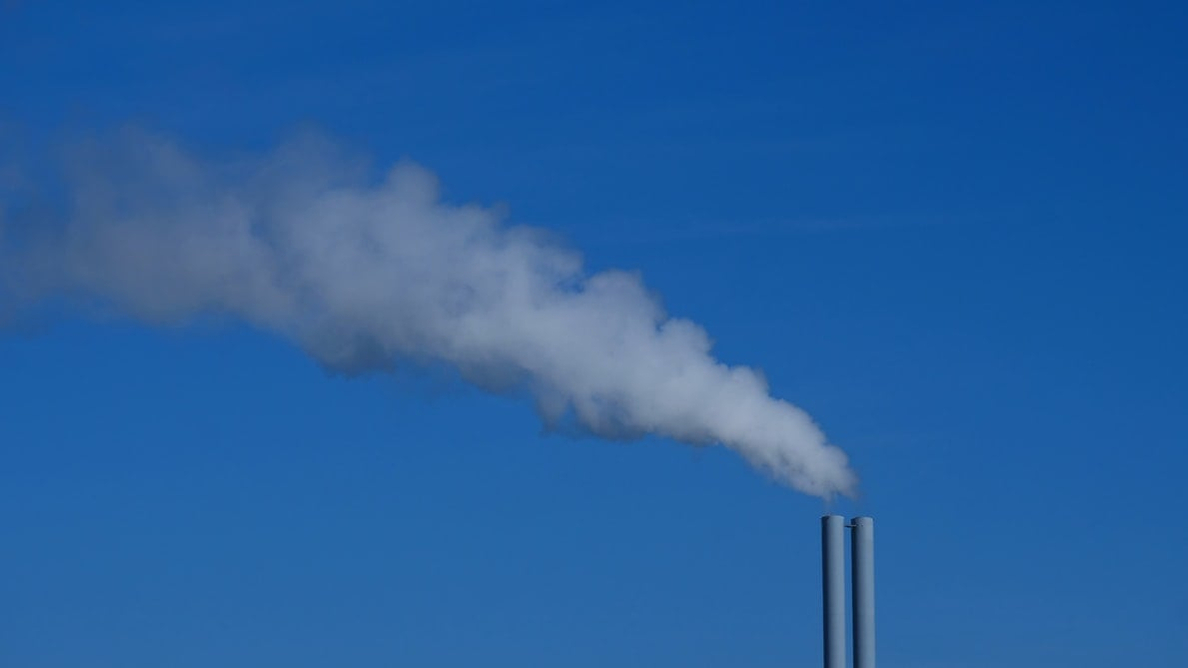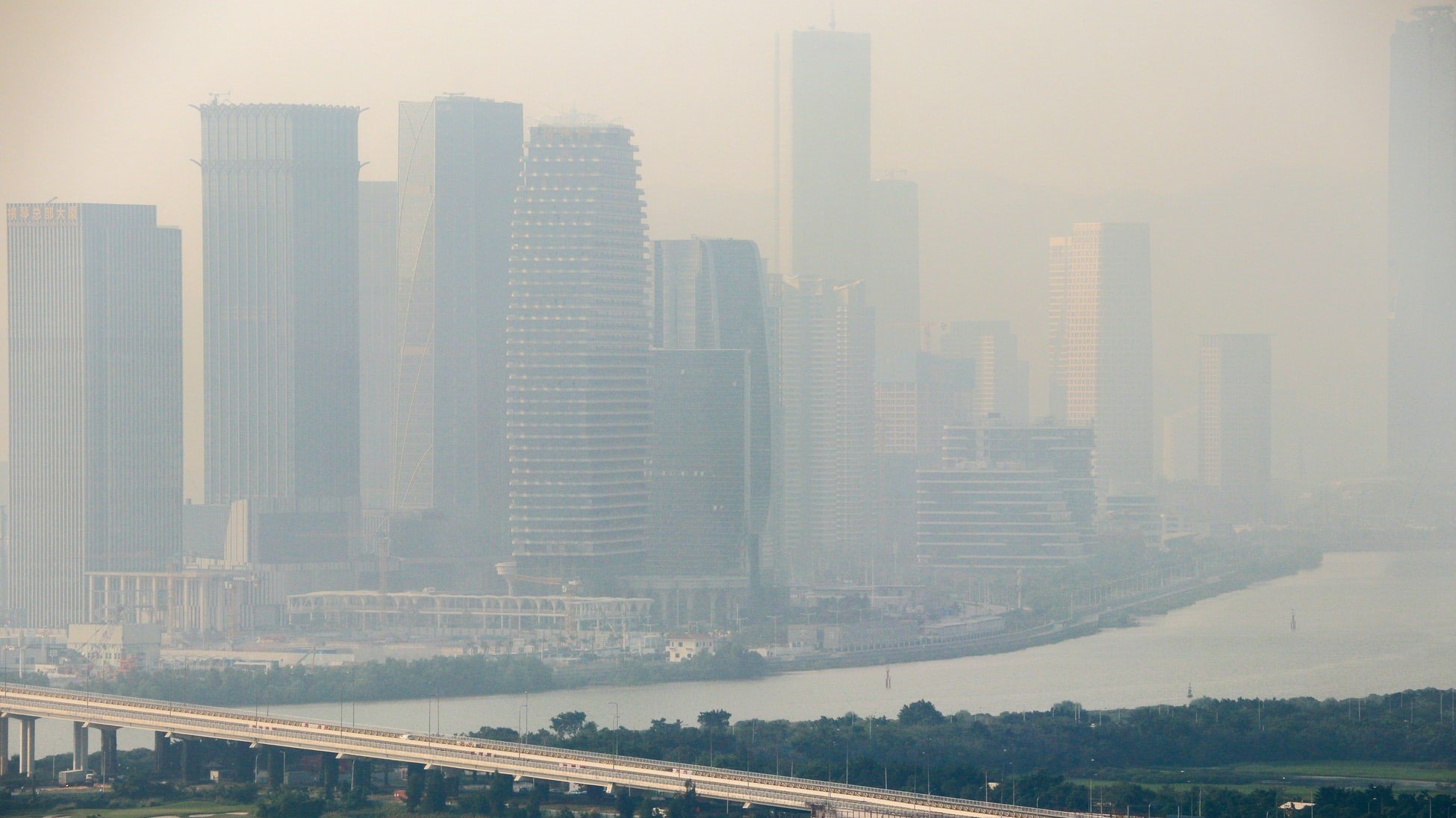Newsletter
One of the primary goals Kaiterra has as a company is to cover the world with air quality monitors. As a part of a larger mission to end air pollution, increasing the scope of air quality monitoring worldwide provides crucial data for researchers to study pollution sources and patterns, as well as the efficacy of pollution mitigation techniques.
Before we can stretch toward our goal, we have to ask ourselves: what is the current state of the world’s air quality monitoring network? What areas of the world are in most need of air quality monitoring, and what areas of the world set an example for air quality monitoring done right? We’d like to explore these questions in this article.
We’re going to go through each continent and assess which areas have the most comprehensive air quality monitoring networks and which areas need the most improvement. Note: this was written in November 2020, and some information may change based on new AQMN developments.
What Does Air Quality Monitor Coverage Look Like Around the World?
What Does a ‘Good’ Air Quality Monitoring Network Look Like?
Before we can evaluate air quality monitoring networks (AQMNs), we need to decide what a ‘good’ network looks like and why we need them.
Let’s start with why we need ‘good’ AQMNs by comparing air quality to the weather. These two phenomena share a close relationship, and both require monitoring to accurately predict future patterns. However, even with the staggering number of weather monitoring stations, we still can’t predict the weather with certainty (anyone looking at spaghetti models during hurricane season definitely understands this frustration). We currently have far fewer air quality monitoring stations worldwide than weather stations, even in wealthy countries, so how can we hope to predict and track air pollution accurately?
Unfortunately, evaluating AQMNs is not as simple as counting up which regions have the most monitoring stations. Governments and organizations around the world operate on tight budgets, so building a potentially infinite number of air quality monitoring stations is not going to happen. Rather, we should work toward a representative network that provides a wealth of information without enormous costs. Likewise, we need to be able to access this data easily; air quality stations are largely useless to the general public if the data is not published anywhere.
With these considerations in mind, let’s explore regional AQMNs in North America.
North America
Air quality monitoring in North America is promising in many areas, especially in Canada and the USA.
USA, Mexico & Canada
Air quality monitoring in the United States is primarily controlled by the Environmental Protection Agency (EPA), but supplemental air quality data can be provided by state-level, county-level, or private air quality monitoring initiatives. With air quality monitoring stations set up around the country, centering in population clusters, the USA sets a good precedent for air quality monitor coverage and data availability. Canada is very similar to the USA, with a solid sensor network across the country and air quality data readily available. Mexico also has an AQMN, but it is not as developed as its counterparts in Canada and the USA.
Los Angeles, California is a hotspot of air pollution in the USA.
However, no monitoring system is currently perfect, and some pollutant parameters are measured in limited areas. For example, air quality monitoring stations in Florida commonly measure ozone and/or particulate matter, but only six monitors across the entire state detect carbon monoxide, and only ten detect nitrogen dioxide. Increasing the availability of air quality data for a greater range of pollutants will improve the overall AQMN in the USA and Canada, as well as Mexico.
Central America & the Caribbean
Central America’s AQMN is virtually nonexistent, with only a select few stations offered by universities or U.S. embassies. Overall, there are no substantial government efforts to create a centralized AQMN, nor is there data available online if monitors are already in place.
Air quality monitoring in the Caribbean is also severely underdeveloped, with AQMNs present in only Martinique, Trinidad and Tobago, and Guadeloupe.
Asia
Air pollution in Asia has been a growing problem for decades, especially for megacities in China, Southeast Asia, and South Asia.
East & Southeast Asia
China, with over 2,100 air quality monitoring stations administered by China National Environmental Monitoring Centre (CNEMC) and thousands of locally run stations, has made a large effort in recent years to curb air pollution, especially in cities like Shanghai and Beijing. Most of these stations are located in the eastern portion of the country, centering around population clusters in large cities. Japan’s air quality monitoring network is fairly extensive, but South Korea’s AQMN is even more developed, with the country’s air quality data is available from AirKorea.

Some districts in Seoul, South Korea, such as the Gangnam district, are installing additional monitors to increase the scope of their AQMN.
Several countries in Southeast Asia, like Cambodia, Myanmar, Laos, and Indonesia, fall short when displaying air quality data. While there may be air quality monitoring occurring within the country, as is the case with Indonesia, national air quality data is not available to the general public, and we don’t know the extent of the AQMN. Thailand, the Philippines, Singapore, Malaysia, and Vietnam are doing a better job monitoring their air quality, with some variation between them. All five of these networks could increase coverage, both spatially and pollutant-wise, but they are on the right track.
South Asia
South Asia has an enormous air pollution problem, and most countries in this region do not have a sufficient AQMN.
Pakistan, Afghanistan, and Sri Lanka do not have an AQMN, and the only data currently available from these countries is from their respective U.S. Embassies. Bangladesh and Bhutan are somewhat better, with at least one monitoring station in several of their cities.

New Delhi, India was the considered the most polluted capital in the world in 2018 and 2019.
India and Nepal are the only two countries in South Asia with decent AQMNs. Nepal has 22 monitoring stations, with all air quality data available through the Department of Air Quality Monitoring. India’s Central Pollution Control Board currently has 241 continuous monitoring stations, including 238 that measure PM2.5, and an online database that has real-time and monthly averages available for each station. All of these steps are necessary and put India on the right track in building a solid AQMN, but there are still gaps in India’s national network, and many cities don’t yet have monitors. Hopefully, this will be rectified as India expands its monitoring network moving into 2024.
Central Asia & Middle East
Central Asia’s AQMN is severely lacking across the board. Kazakhstan has some monitoring stations, with data available online, but there are not nearly enough stations to create a representative network. Likewise, Mongolia has about a dozen stations in its capital city, and Kyrgyzstan has some data from a citizen science project through Luftdaten. Uzbekistan, Turkmenistan, and Tajikistan don’t have an AQMN.
Iran, the UAE, Cyprus, Bahrain, Jordan, and Israel currently have the most developed AQMNs in the Middle East. These five countries have some monitors in place and data available through an online database, even if it is only for one city.

Dubai, United Arab Emirates has over 13 air quality monitoring stations within the city.
Other countries like Turkey, Saudi Arabia, Iraq, Syria, Yemen, Oman, and Qatar do not have any solid AQMN set up. This issue is especially relevant for Turkey, as its air quality regularly crosses health thresholds and is regarded as one of the greatest environmental threats in Turkey.
Australia & New Zealand
Let’s move our discussion on to Australia and New Zealand, whose respective AQMNs are reasonably good.
Australia has many air quality stations across the country, but its AQMN excludes most parts of the sparsely populated central and western interior. The data from Australia’s AQMN is only available through individual state government websites rather than a national database.

Air quality data from over 50 stations in Sydney and other parts of New South Wales, Australia, is available from the NSW Department of Planning, Industry, and Environment.
New Zealand’s Ministry of the Environment monitors air quality in all 16 of its regions, with data from 138 stations available from Land Air Water Aotearoa (LAWA). The New Zealand government monitors PM2.5, PM10, SO2, CO, NO2, O3, and Benzene, representing some of the most prevalent and dangerous outdoor air pollutants.
Europe
Europe’s AQMN is one of the world’s most comprehensive and extensive, with most members of the European Union having a substantial number of stations already in place. Not every station takes readings for every pollutant, and some stations, especially in Northern Europe, operate seasonally, when concentrations are at their highest.

Northern locations, like Stockholm, Sweden, only operate their monitoring stations during peak pollution season.
Additionally, most member states report their air quality readings to the European Union’s Environment Agency, displayed on the European Air Quality Portal, with countries like Switzerland, Slovenia, Bosnia and Herzegovina, and Albania the exceptions. However, there remain some issues with siloed data, and in some cases, countries and municipalities will have their own data portals for local, daily values.
The former Soviet Union & the difficulty modernizing existing monitoring networks
The Soviet Union, before its collapse, had several air quality monitoring stations in place throughout the country, including Russia, the Baltic states, Ukraine, Belarus, Uzbekistan, and others. These stations often fell by the wayside after the Soviet Union broke up and the technology became outdated.
Currently, Russia has a comprehensive environmental monitoring network in Moscow, but air quality data from outside this city remains very spotty and decentralized. For countries like Azerbaijan, Georgia, and Armenia, which inherited the old Soviet network but fall outside of the European Union’s jurisdiction, modernizing air quality stations remains a challenge.
Africa
Air quality monitoring in Africa is, currently, in a dismal state. With a few exceptions, which we will address in a bit, there is a distinct lack of coordinated, national efforts to implement air quality monitoring.

Lagos, Nigeria is the most populated city in Africa, yet it does not have a solid AQMN in place.
Among Africa’s most populated countries, Nigeria, Ethiopia, the Democratic Republic of the Congo, and Tanzania all lack suitable AQMNs. While there may be some air quality monitors set up by private organizations or foreign embassies, national, real-time air quality data is not available in most parts of these countries, and it makes assessing the severity of air pollution in these countries severely challenging.
South Africa, Egypt, & Uganda
South Africa has the best AQMN in Africa. The South African Air Quality Information System (SAAQIS) is a centralized data platform that consolidates data from national, provincial, municipal, and private AQMNs and makes it available online.

Cairo, Egypt looks to expand public transportation networks to cut down its air pollution.
While Egypt’s AQMN is not as developed as South Africa's, it does have several air quality monitoring stations set up in Cairo, the Delta area, the Greater Desert area, and along the Red Sea. Data from these stations is available from Egypt’s Ministry of Environment. However, air quality reports are only available after registration, and past air quality data is unavailable.
Uganda is an interesting case, as its AQMN was set up and maintained by a private organization called AirQo. Located in Makerere University, AirQo setup and supports dozens of air quality monitoring locations across the country, making real-time air quality data available on its website and app. Most of these monitors only measure particulate matter, but these stations are certainly a good starting point and will help Uganda accurately assess its air pollution.
South America
South America's AQMN situation is very much focused on monitoring specific cities, including São Paulo, Bogotá, Lima, Medellín, and Santiago. While this is certainly better than nothing, we don’t have a clear view of the air quality situation outside of these cities, and many countries like Bolivia, Guyana, Uruguay, and Venezuela completely lack an AQMN.
Brazil, Columbia, & Chile
Brazil, the most populous country in South America, has a significantly deficient AQMN, with pollutant monitoring only happening in less than half of its states (as of the writing of this article). There is one location in Brazil, however, that is doing a great job monitoring its air quality: São Paulo. As the pioneer of green building in Brazil, the municipal government of São Paulo has set up over 60 monitoring stations to collect air quality data from the metropolitan area and the interior of the state, making air quality data available in an online database.
Columbia is in a similar boat. While Bogotá and Medellín have an AQMN already established, Bogota’s real-time air quality data is not available, and the rest of the country has very few stations.

Santiago, Chile is one of South America's most polluted cities, due to both wood burning and geography.
Chile has the best national AQMN on the continent, with a more even distribution of stations and a cluster around Santiago. Despite the relative lack of variety in pollutant monitoring (most stations only monitor particulate matter), Chile does set the standard for AQMNs in South America.
Conclusions & Takeaways
At the end of all this, what can we conclude?
- Cost burden: Because of the economic costs of setting up the infrastructure for collecting and disseminating air quality data, ‘good’ AQMNs tend to cluster in areas that prioritize air pollution mitigation and have the economic backing to carry out air quality monitoring plans. These regions include the USA, Canada, East Asia, and most of Europe. Working to remove cost barriers to air quality monitoring, including the costs of the sensors themselves, should go a long way in helping other areas develop their AQMNs.
- Data transparency: Many regions have air quality stations in place but lack the data platforms necessary to store and display local air quality values. This may be a question of transparency or cost burden, but data accessibility definitely needs to be improved in these locations before any large-scale conclusions about air quality trends can be drawn. People living in these regions could also benefit from this information, as they would be better equipped to make personal decisions relating to their health.
- Data variations: The types of data collected by air quality monitoring stations and data reporting schedules can vary greatly. For example, Bhutan has been monitoring PM10 for years, but these values tell us little about the status of NO2 or SO2 emissions in the country.
- Data siloes: Air quality data is often siloed. Even within one country, you might have to look at several different websites or applications to find local air quality values. In cases like these, platforms that unify air quality data into one location, such as Kaiterra’s Live Air, are crucial tools for researchers and citizens alike.
- Negative impacts on air quality analysis: Pollution level negatively correlates with the quality of a country’s AQMN. This is a crucial relationship to identify, as the world’s air quality data is currently disproportionately attributed to areas with lower pollution levels. For example, many countries in Africa and Asia have visibly terrible air quality on many occasions, but this air pollution is ultimately ‘missing’ from the world’s air quality data; how can we assess the world’s air if we don’t have data from some of the most polluted countries?
Now that we know some of challenges facing the world's AQMNs, what are some ways to help? Read our interview with Raefer Wallis, founder and CEO of RESET Air, to learn more about the connection between affordable air quality monitoring and the diplomatic community!






.png?width=200&height=148&name=Menu%20C%20(2).png)

.png?width=307&height=228&name=Menu%20-%20D%20(1).png)
.png)





